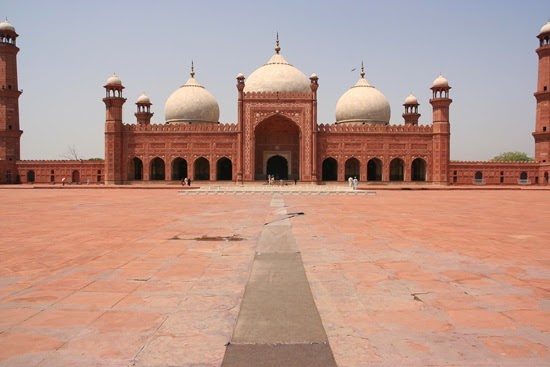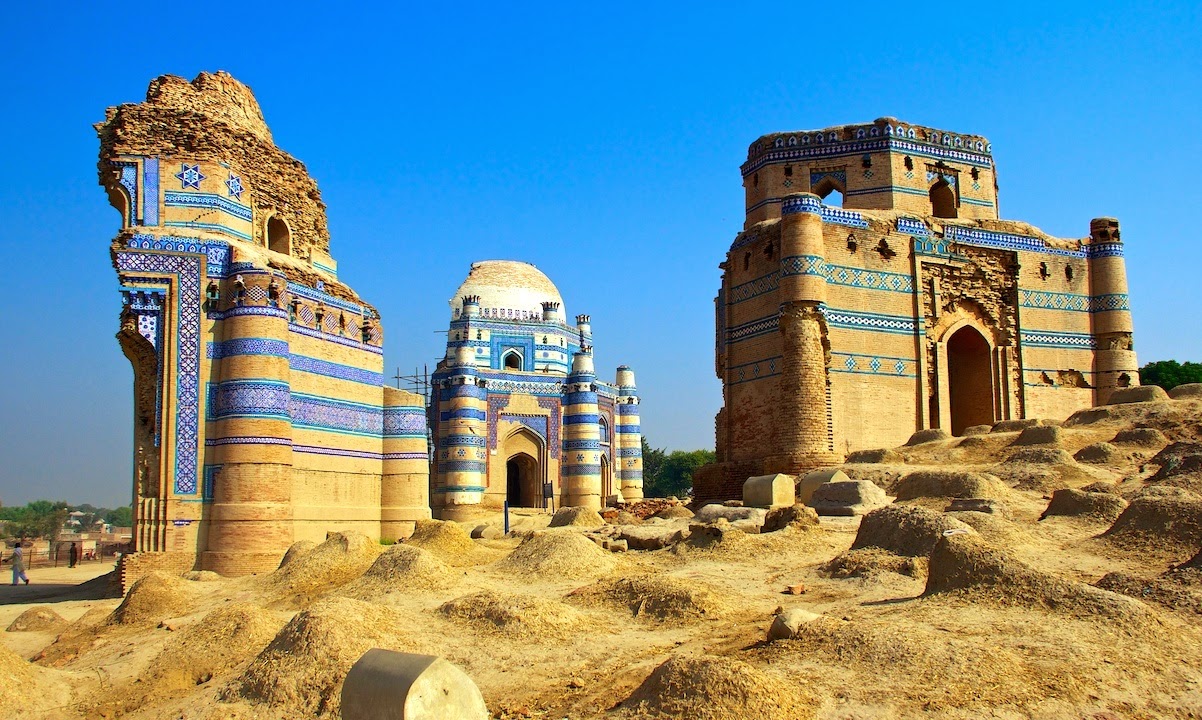Pakistan is a Muslim country full of Islamic culture and mosques. There are many beautiful mosques in every city and region of Pakistan but some are really famous for their architecture, structure and history. Even Non-Muslims appraise the grandeur and beauty of these mosques.
Faisal Masjid, Islamabad
It was designed by Turkish architect Vedat Dalokay to be shaped like a desert Bedouin’s tent, it completed in 1986. The Mosque is conceived as the National Mosque of Pakistan and named after the late King Faisal bin Abdul-Aziz of Saudi Arabia, who supported and financed the project. Unlike traditional Masjid design, it lacks a dome. The thin minarets borrow their design from Turkish tradition. This is listed as the National Mosque of Pakistan. It is also featured on the Pak Rupees 5000 banknote.
Badshahi Masjid, Lahore
This Masjid was built by Mughal Emperor Aurangzeb in 1673. It is the second largest mosque in Pakistan and South Asia and the fifth largest mosque in the world. It is Lahore's most famous landmark and a major tourist attraction. It is capable of accommodating 5,000 worshippers in its main prayer hall and a further 95,000 in its courtyard and porticoes, it remained the largest mosque in the world from 1673 to 1986 (a period of 313 years), when overtaken in size by the completion of the Faisal Mosque in Islamabad.
Masjid-e-Tooba, Karachi
Masjid e Tooba is located in Karachi, and is locally known as the Gol Masjid. It was built in 1969, and is often claimed to be the largest single-dome mosque in the world. The mosque is built with pure white marble. The dome is 72 meters (236 feet) in diameter and is balanced on a low surrounding wall with no central pillars. Masjid e Tooba has a single minaret standing 70 meters high. The mosque is the 18th largest in the world with the central prayer hall having a capacity of 5,000 people.
Mahabat Khan Masjid, Peshawar
The Mahabat Khan Mosque is a 17th-century mosque in Peshawar. The Mosque was built in 1630. It is named after the Mughal governor of Peshawar Nawab Mahabat. The interior of the prayer hall is sheltered beneath three low fluted domes and is lavishly and colorfully painted with floral and geometric designs.
Bhong Masjid, Rahim Yar Khan
Bhong Masjid is located in the village of Bhong, Sadiqabad Tehsil, Rahim Yar Khan District. It was designed and constructed over a period of nearly 50 years (1932–1982) and won Sitara-e-Imtiaz in 2004. A postage stamp depicting it was issued on May 12, 2004, in Pakistan. The mosque is well-known for its exquisite design and architectural beauty with gold leaves carved for the complicated decorative patterns and the stylish calligraphic work.
Wazir Khan Masjid, Lahore
It was built in seven years, starting around 1634–1635 AD, during the reign of the Mughal Emperor Shah Jehan. The mosque is inside the Inner City and is easiest accessed from Delhi Gate.
Grand Jamia Masjid, Bahria Town Lahore
Grand Jamia Masjid is a mosque located in Bahria Town, Lahore, Pakistan. It is claimed to be the 7th largest mosque in the world which can accommodate 25,000 worshipers in the main hall and it has a total capacity of 70,000. It has 21 domes and four 165 feet high minarets.
Shah Jahan Masjid, Thatta
The Shah Jahan Mosque is located in Thatta, Sindh. The mosque was built in 1647, during the reign of Mughal King Shah Jahan. It has a total of 93 domes. It was built keeping acoustics in mind; a person speaking on one end of the dome can be heard from the other end when the speech exceeds 100 decibel.
Shahi Eid Gah Masjid, Multan
This grand mosque is located on the main Multan-Lahore highway. It was built in 1735 AD by Nawab Abdul Samad Khan when he was the Mughal governor of Multan. It is very spacious, provided with a vast courtyard and a huge prayer chamber measuring 250 feet by 54 feet and crowned by seven domes.
Jamia Masjid Eidgah , Gujrat
Jamia Masajid Eidgah Gujrat is the replica of Badshahi Masjid of Lahore. Though it is comparatively a smaller mosque but its design is same like Badshahi Masjid Lahore and Jamia Masjid Delhi. It is located near GTS Chowk in the city of Gujrat.


































































